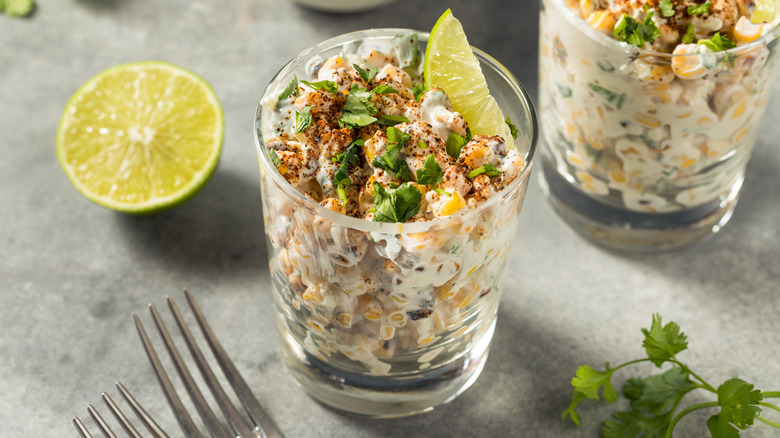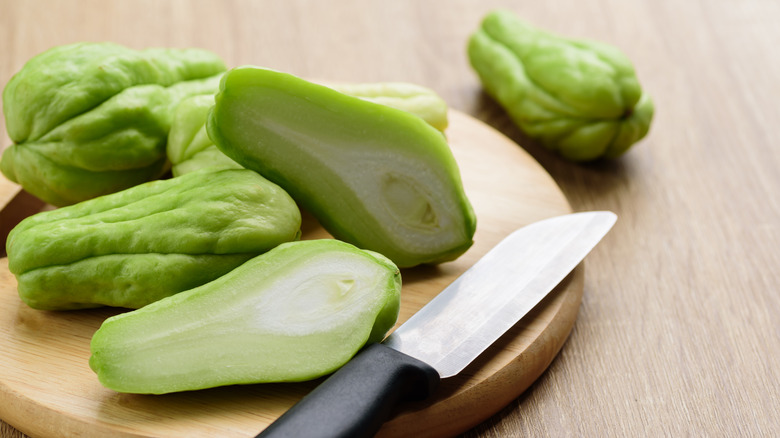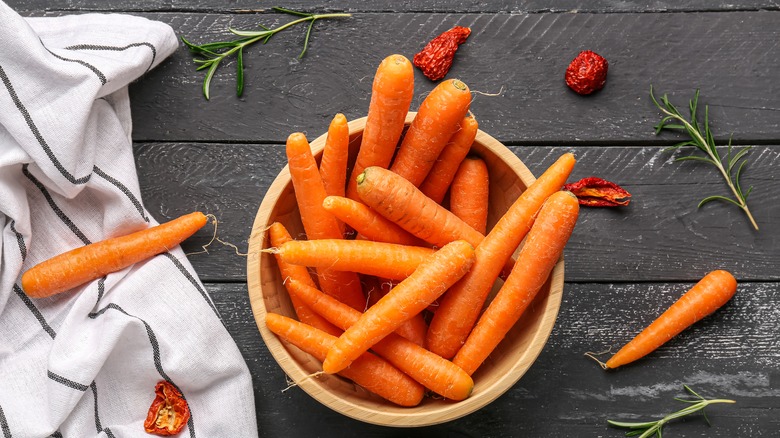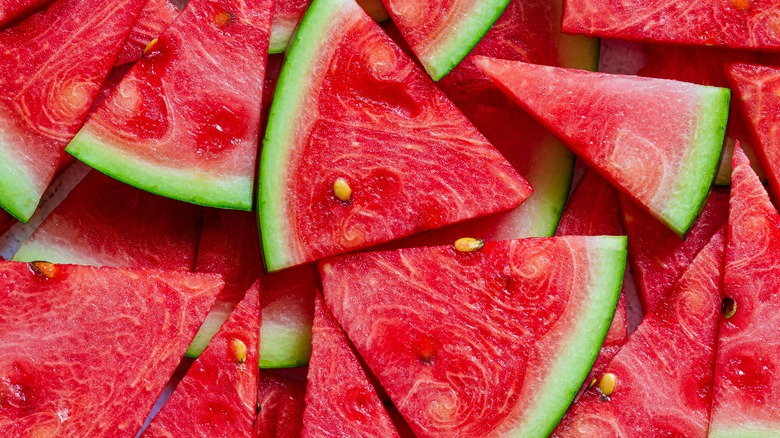The 3 Best Corn Substitutions For Esquites, According To Claudette Zepeda - Exclusive
If you've ever been to a carnival, night market, or Mexican food popup, you've probably come across elote, grilled corn on the cob that's smothered in mayonnaise, chili powder, cojita cheese, and other ingredients. It's a delicious snack whose sweet and savory flavors will satisfy even the fussiest customer. But it can also be quite messy. A wonderful alternative that will give you all the same flavors without the mess is Esquites. But where elote finds the corn kernels attached to the cob, esquites has those same kernels cut off and served in a bowl with all the fixings.
There's only one problem with both of these scrumptious snacks: They're typically summer bites. If you're in the mood for esquites during the fall or winter months, it will be harder to find because corn isn't typically in season. While you could use canned corn to whip up a quick bowl of esquites, award-winning chef Claudette Zepeda suggested carrots, chayotes, and watermelon when we talked to her at the inaugural Los Angeles Wine & Food Festival. Those may sound like odd choices, but Zepeda says they work great because they have similar textures and explains that "anything that when you cook it or steam it has a water content and then a sweetness" will be good alternatives.
Chayotes
If you've never heard of chayote, it's a Mexican squash that's becoming more popular as its availability increases across farmers' markets and grocery stores. A bright green, pear-shaped squash, this vegetable is commonly used in Latin American and Asian cuisine. Since chaoyte can be enjoyed cooked or raw, it's often an ingredient in soups and salads because of its mild flavor and water content. But the vegetable can be used in just about anything which is why Zepeda often slices it up for her esquites when corn isn't in season. "Chayotes have that same little water bursts of corn," she explains. It's also got "a little bit of sweetness in it, it's got the water content," she continues.
When Zepeda makes her chayote esquites, as seen in an Instagram Reel, she slices it up and boils it first. She even includes the seed, since unlike other squashes, the chayote seed is edible, as is its skin, vines, and flowers. Once the squash is cooked, the chef douses it in spices and mayonnaise. But then she changes things up. Although lime juice is typically added to equites for a zesty tang, Zepeda suggested mustard instead.
Carrots
Carrots are one of the few root vegetables that are in season all year. While they tend to be their sweetest in the spring and fall, carrots make a great side, soup, or smoothie during the winter and summer as well. It's for that very reason that Zepeda says she'll dice them up as an alternative when making esquites.
Just like the chayote, this vegetable can also be enjoyed raw, roasted, or boiled and still maintain its crunch while getting even sweeter as it's cooked. But if you really want to get the most flavor out of your carrots, it's best to buy them when they're small and bright.
Known for its wide variety of health benefits including lowering cholesterol and improving eyesight, the carrot comes in a variety of colors including purple, white, red, and yellow. Even though the classic orange carrot is the easiest to find and would make delightful esquites, grabbing a bunch of multicolored carrots would make for a show-stopping version of the dish.
Watermelon
While esquites are usually made from vegetables like corn and carrots, Zepeda says fruit can be turned into esquites as well. She says she's even made esquites out of roasted watermelon. We weren't surprised to hear this as an alternative since, like corn, watermelon also has a lot of water content and is very sweet. Actually, we can't think of anything better than biting into a slice of watermelon on a hot summer day. So, turning this juicy gourd into a sweet and savory side really intrigues us. The only thing we're unsure of is how. Zepeda tells us, "You can dice it into small little pieces to be like the corn kernels, or you can [slice it] like I did the chayotes esquites."
Even though Zepeda says she roasted the watermelon first, just like the other produce she mentioned, you could easily make esquites out of raw watermelon as well. Watermelon season may be the same as corn season, from May to September, but there's no reason not to try this alternative, as it would be a perfect side for an afternoon picnic.



